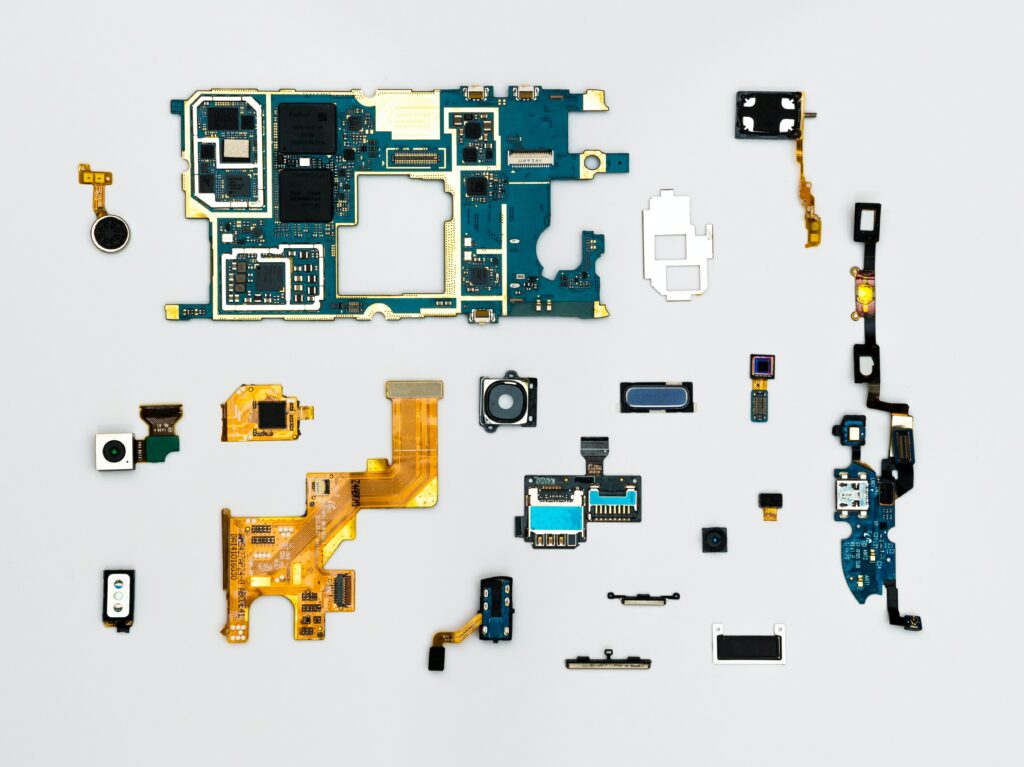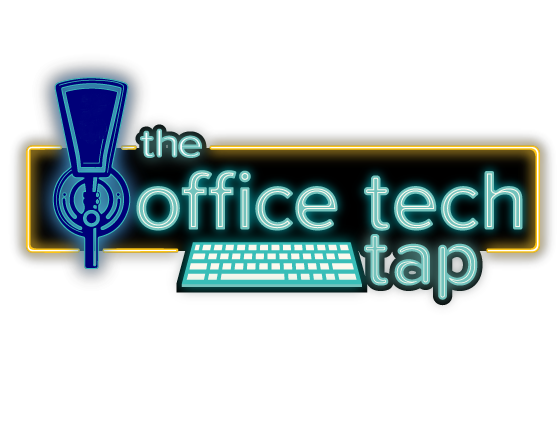Office Technology Landscape: Past, Present, And Future

Office Technology Tap
January 12, 2023
We hope this newsletter finds you well. We wanted to share some thoughts on the evolution of the office technology landscape over the years, and how it has impacted the way we work.
As you know, there has been a proliferation of connected devices and software tools in recent years that have helped to streamline office workflows and enhance productivity. From computers and printers to copiers and fax machines, these tools have played a crucial role in enabling efficient communication and collaboration.
Prior to 2020, the trend of remote work or “work-from-anywhere” had gained popularity, thanks in part to advances in mobile computing and access to shared data via the cloud. However, the past two years have presented a number of challenges that have forced us to rethink our approach to remote work and consider bringing employees back into the office.
Looking forward to 2023, we can expect these trends to continue to evolve and adapt to meet the changing needs of the modern workforce. Despite the challenges of the past year, there is a sense of optimism and opportunity for innovation in the office technology sector.
These shifts, combined with the major challenges of 2022, have brought on an array of issues that may begin to see resolution in the coming year.
Greg
The year 2022 & 2023
What happened in 2022?
I think 2020 is a “change like never before” year as the way of work has shifted beyond imagination. Through a sea of innumerable forces, for me, there are three standouts in 2022:
- The Supply Chain
- Work from Anywhere and the Return to the Office
- Quiet Quitting
The Supply Chain
For the office technology world, the beginning of 2022 was grim. COVID caused disruptions and shortages in the production and supply of chips, copiers, printers, and other office technology tools. At the same time, because of the shift to remote work, there was an increased demand for these products and services. 120-day delivery schedules were not uncommon.
Of course, there is more. Insecurities around the war in Ukraine heightened and slowed a quick recovery. The shortage of truck drivers hampered deliveries of everything from computers to lettuce, and fears of a looming recession and rising inflation tapped demand.
All manufacturers experienced shortages, inventory, and shipping challenges with dire predictions for the next two years. Chip shortages, the plague of nearly every technology niche, made it difficult to find A4 devices.
The environment improved in the last three months of 2022 and is expected to continue to get better into 2023.
What did you do in 2022 to be successful even with Supply Chain challenges?
- Communicate with OEMs – The best thing to come out of the supply chain challenges was establishing long-lasting channels of communication between resellers and manufacturers.
- Communicate with Customers –” Customers for Life” is more than a mantra. Going through the pandemic together formed lasting bonds between you and your customers.
- Communicate with Leasing Partners – Money is the fuel running Office Technology’s engine, and our leasing companies were more flexible than ever in 2022.
The Solidification of Work from Anywhere or The Return to Office?
The shift towards remote work came full circle in 2022, leading to the redefinition of traditional office models. In the second half of the year, more businesses proposed a return to the office, facing resistance from a workforce comfortable with working anywhere but in a cubicle.
“Hybrid” office environments were the talk among enterprise and mid-sized businesses. If you’re pushing paper, hardcopy, or digital, working from anywhere is a proven technical reality.
The result of a mixed work environment added more complexity to Office Technology in everything from the procurement process to delivery, and post-installation service and support.
What did you do in 2022, the beginning stage of secular change in the office environment?
- Repackaged – You worked with your ecosystem to deliver flexible solutions to your existing clients.
- Maintained Contact – In stressful situations without clear communication, the imagination projects bad scenarios. You not only made yourself available, but you also shared common experiences – never have so many, shared so much at the same time.
Remained Informed – Especially with your Leasing companies. Talking with the lease company during Covid didn’t include denials or missing initials – they worked with, not against you.
Quiet Quitting
Last year, “Quiet quitting,” the act of doing what is outlined in one’s job description and no more, became the business alliteration de jour. Everybody was talking about it – and some employers took issue with this stance.
In 2022, Quiet Quitting was recognized as more than a marketing cliché and likely affected half of the workforce – it is real and a determining factor for all sides of the employment spectrum. Gallup finds that “the optimal engagement boost occurs when employees spend 60% to 80% of their time—or three to four days in a five-day workweek—working off-site.”
As the evolution in the workplace evolves in 2023, the phrase may fade but the attitude will not.
What did you do to address Quiet Quitting?
- You helped your clients utilize the latest Office Technology to build a more engaging hybrid, remote, and office work environment.
- You improved your management by being more realistic about project deadlines and workloads while clearly determining obtainable milestones; not simply processes.
- You offered development and growth opportunities to your employees who felt stuck in their current roles. This helped prevent them from feeling like they lack advancement opportunities and prevent them from pulling back at work.
What is going to happen in 2023?
The year 2023 is hopeful and optimistic. True, we went so low over the past 36 months that almost any scrap of good news carries the day, but there are solid indicators and reasons to be positive.
Out of many different influences for the next year, these three have my attention:
- The rebound in business
- Commercial Real Estate transmutation
- Artificial Intelligence
More Business in 2023
Better business news is almost not worthy of mentioning. Of course, things are going to get better; we bottomed out in 2022, and there is nowhere else to go but up.
Still – the last quarter of 2022 swung up in a big way riding a wave of pent-up demand and losing supply. Things are going to be better next year because:
- There are fewer resellers left standing.
- The 40% of workers who do return to a cubicle are the same ones who print and use copiers.
- The demand for Office Technology tools that increase productivity remains high.
What to do in 2023?
- Double down on training and teach the basics of selling to your entire staff. Everybody sells, and learning your customers’ sales journey is just as valuable in the accounting department as it is for your service team.
- Invest in your current customer relationships through technology by building your processes around a deeper and more valuable customer experience. Look at your legacy software and evaluate how well the current solution reduces friction.
- Look for net new opportunities. In 2022, we all circled the wagons and deepened existing relationships. The risk of switching suppliers and aligning new partnerships was just as valuable to you as it was for your customers – we bought and sold to people we knew and trusted. In 2023, it’s time to get back to building new relationships and attracting new customers.
“IBM is bullet proof, “Shares of International Business Machines Corporation IBM have risen 17.9% over the past three months, driven by healthy revenues on the back of a flexible business model and a quick time-to-market schedule to meet clients’ evolving needs,” Zacks Research says in a new analysis.”
Office Space will Take a Hit
There is no doubt that remote working is negatively impacting office leases around the country and as you can imagine, fewer on-site employees reduce an organization’s need for basic office technology – fewer phones, desktops, printers, and copiers.
In recent years, companies have grown rapidly due to a lot of cheap capital and investors looking for returns. However, in 2023, companies have started to reduce their number of employees to save money.
In addition, data shows that these companies are also reducing their physical office space, especially in popular locations. For example, Meta has already left four office buildings and plans to leave two more since its third-quarter earnings call.
What to do in 2023?
- Understand the dynamics of the local office space market. It is easy to visualize expanding opportunities when there is a run-on office space – the idea in 2023 is to convert increased office vacancies into business opportunities.
- Learn how to market and sell bundled, mobile solutions. Again, as companies reduce costs associated with physical space, they are going to require mobile, cloud-based technology and a partnership with somebody who knows how to use tools to increase revenue, reduce costs and grow profits.
- Look for companies getting employees back to the office. A recession may entice folks back to the security of shared space and resources( aka, The Office). Align with those companies and offer your know-how when it comes to maximizing productivity by automating and systemizing every process possible.
The Youth of Artificial Intelligence
This is the One. In my view, the biggest impact on Office Technology, indeed the world, will be the universal presence and adoption of artificial intelligence.
First, let’s broadly define Artificial Intelligence (AI):
Artificial intelligence (AI) refers to the simulation of human intelligence in machines that are programmed to think and act like humans. These intelligent machines can be trained to perform various tasks, such as analyzing data, making decisions, and solving problems.
A few things that have come to light in the past year regarding AI are:
- More people have heard of AI more often than not.
- In the Office Technology niche, AI is misunderstood and marketed as something it isn’t.
- As good as it is today, the level of sophistication relative to the very near future is rudimentary, like comparing an abacus to an IBM AT.
Today’s AI is more newborn than Newtonian. But unlike humans, AI grows exponentially and learns at the speed of light – literally. AI will handle toner delivery scheduling all the way back to manufacturing the actual toner while other versions of AI are figuring out how to perform accounting tasks without printing or copying.
That’s where it is going.
What to do in 2023?
The question for dealers adopting AI in 2023 comes down to:
“What are some good examples of how copier dealers can utilize AI in their business to increase sales, reduce costs, grow profits, and hire/retain good talent?”
It’s a good question. Here are some ideas:
- Sales: AI can be used to analyze customer data and identify potential sales leads, as well as to optimize marketing campaigns to target the most promising leads. This can help copier dealers increase their sales and revenue.
- Costs: AI can be used to automate routine tasks, such as data entry and customer service inquiries, which can reduce labor costs and improve efficiency.
- Profits: By using AI to optimize business processes and improve efficiency, copier dealers can reduce costs and increase profits.
- Talent: AI can be used to identify and recruit top talent by analyzing resumes and job applications. AI can also be used to retain good employees by providing personalized training and development programs.
AI can help you focus on growing your profit by:
- Automation: AI can be used to automate routine tasks, such as data entry and customer service inquiries, which can reduce labor costs and improve efficiency.
- Improved decision-making: AI can analyze large amounts of data and provide insights that can help copier dealers make more informed business decisions, such as identifying new opportunities for growth or identifying areas where costs can be reduced.
- Personalized marketing: AI can analyze customer data and identify the most promising sales leads, as well as optimize marketing campaigns to target these leads more effectively. This can help copier dealers increase their sales and revenue.
- Predictive maintenance: AI can analyze data from copier equipment and predict when maintenance will be needed, allowing copier dealers to schedule maintenance proactively and reduce costly downtime.
Would you like to have a conversation about the industry? Drop me a line at greg@theofficetechtap.com.
Have a great week.
Supply Chain
A tech ‘golden age’ awaits supply chains limping out of the pandemic.

According to CB Insights, there were 64 supply-chain tech companies valued at more than $1 billion as of October, almost double the number of unicorns since late 2020 and putting the group’s total valuation to $173 billion.
The article is here.
Will the supply chain troubles get any better in 2023?
Around this time last year, dozens of container ships were waiting off the coast of California to unload cargo at the U.S.’s two largest ports in Los Angeles and Long Beach. Now, there aren’t dozens of cargo ships waiting to unload. Stores have fewer backorders and more overstock.
Read about it, here.
Workstyle Trends
The Future of Cities in a Remote Work World: How the Pandemic is Changing the Nature of the Office and Urban Centers

Remote work is leading to a financial crisis for major urban areas that rely on commercial real estate for a significant portion of their tax base. However, this shift also presents an opportunity for cities to reimagine their design and purpose, potentially leading to more equitable, affordable, and humane metropolises and Office Technology will lead the way.
Read more, here.
Industry
The Impact of Quiet Quitting on Office Technology Purchases

Disengaged employees who are not fully invested in their work make it difficult for organizations to justify investing in new technology.
Organizations that struggle with low employee engagement and high turnover will prioritize investments in Office Technology that improves communication and connection among team members.
Learn more about the impact of Quiet Quitting, here.
The IRC – Internet Relay Chat
- Kyocera Corporation plans to build a new manufacturing plant in the Nagasaki Prefecture. No specifics yet, but some are betting the new plant will make semiconductors.
- The disengagement crisis: Is it quiet quitting or tacit termination?
- Gartner: Flexible Working Hours Enable Remote Workers to Increase Productivity
- The non-linear workdays changing the shape of productivity – BBC Worklife
- Printer settings changed on Election Day, linked to tabulators rejecting ballots: Maricopa official
- The gaming world runs on the same tech as the office. Check out The Gaming Tap, here.



